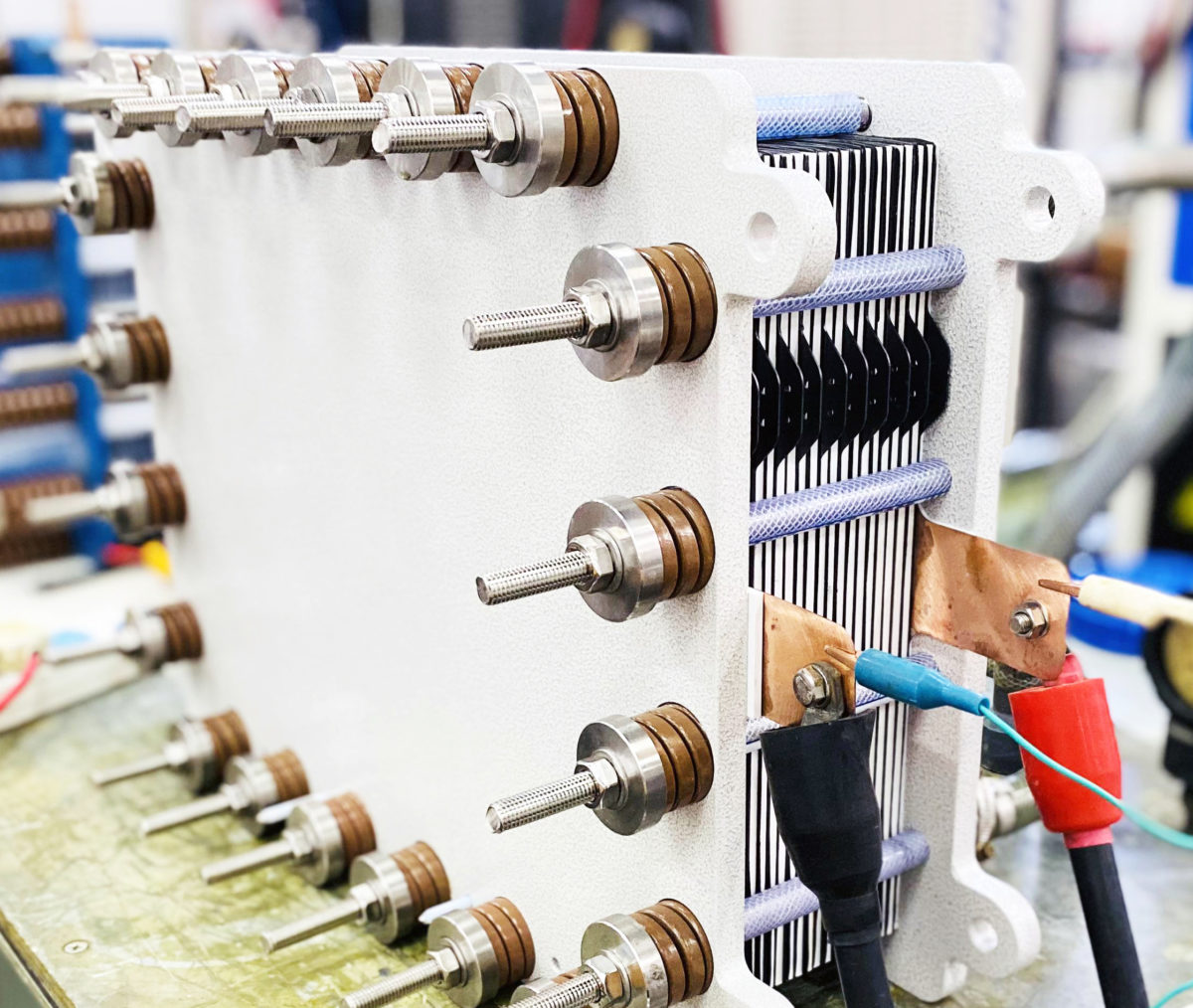Researchers from the Chinese Academy of Sciences have built a kilowatt-scale aqueous redox flow battery with high-performance organic redox-active molecules.
Flow batteries (FB) have started to attract widespread attention as a large-scale energy storage solution, due to their high security and effectiveness. In particular, aqueous organic flow batteries (AOFBs), which use structurally tunable and eco-friendly redox-active molecules, are getting more attention.
“However, most organic molecules in AOFBs are prone to be oxidized especially by air, resulting in irreversible capacity decay, which hinders their further applications,” researcher Changkun Zhang told pv magazine.
Zhang and his team sought to solve this issue by using an electrolyte based on methylthioninium chloride, which is also known as methylene blue (MB).
“We optimized electrolyte composition by tuning the interaction between different components in the electrolyte, thereby increasing the battery capacity,” said researcher Xianfeng Li, noting that the MB concentration in the electrolyte did not exceed 1.9 mol (M).
The scientists assembled 10 units of 1000 cm2 AOFBs stacks and obtained stacks with a discharge power of over 1 kW and a stable cycling capacity for 32 days. The stacks were assembled with MB concentrations of 0.1 M and 0.5 M, respectively.
“The 0.1 M V-MB stack exhibited discharge capacities of 121, 117 and 112 Ah with coulombic efficiency and energy efficiency of 99.6%, 99.7%, 99.8% and 82.5%, 75.1%, 69.2% at the current densities of 40, 60, and 80 mA cm -2 in the initial cycle (Fig. 4b),” they explained. “The utilization of the MB electrolyte at 40 mA cm -2 is around 95%.”
The battery showed a capacity of 80 mA cm-2 for over 500 cycles and also achieved long-life cycle performance after 380 cycles, with a capacity of around 510 Ah at 50 mA cm -2. The researchers said the molecules contributed to the “excellent” stability of the device.
“Although the side reactions of the pristine MB were severe at 70 C, most of the decomposed molecules still retain the redox center with only a slight capacity decay,” they explained.
They presented the battery in “Insight into Air-stable Methylene Blue Catholyte towards kW-scale Practical Aqueous Organic Flow Batteries,” which was recently published in Energy & Environmental Science.
“We found in this work that in the methylene blue (MB) electrolyte, both the oxygen-resistant MB radicals generated by the comproportionation reaction and the reduced MB states in acidic electrolyte displayed much more stable molecular structure,” Li concluded. “Based on this, we also designed the first AOFB stack which would definitely be an important reference for the AOFB practical application.”
This content is protected by copyright and may not be reused. If you want to cooperate with us and would like to reuse some of our content, please contact: editors@pv-magazine.com.




4 comments
By submitting this form you agree to pv magazine using your data for the purposes of publishing your comment.
Your personal data will only be disclosed or otherwise transmitted to third parties for the purposes of spam filtering or if this is necessary for technical maintenance of the website. Any other transfer to third parties will not take place unless this is justified on the basis of applicable data protection regulations or if pv magazine is legally obliged to do so.
You may revoke this consent at any time with effect for the future, in which case your personal data will be deleted immediately. Otherwise, your data will be deleted if pv magazine has processed your request or the purpose of data storage is fulfilled.
Further information on data privacy can be found in our Data Protection Policy.